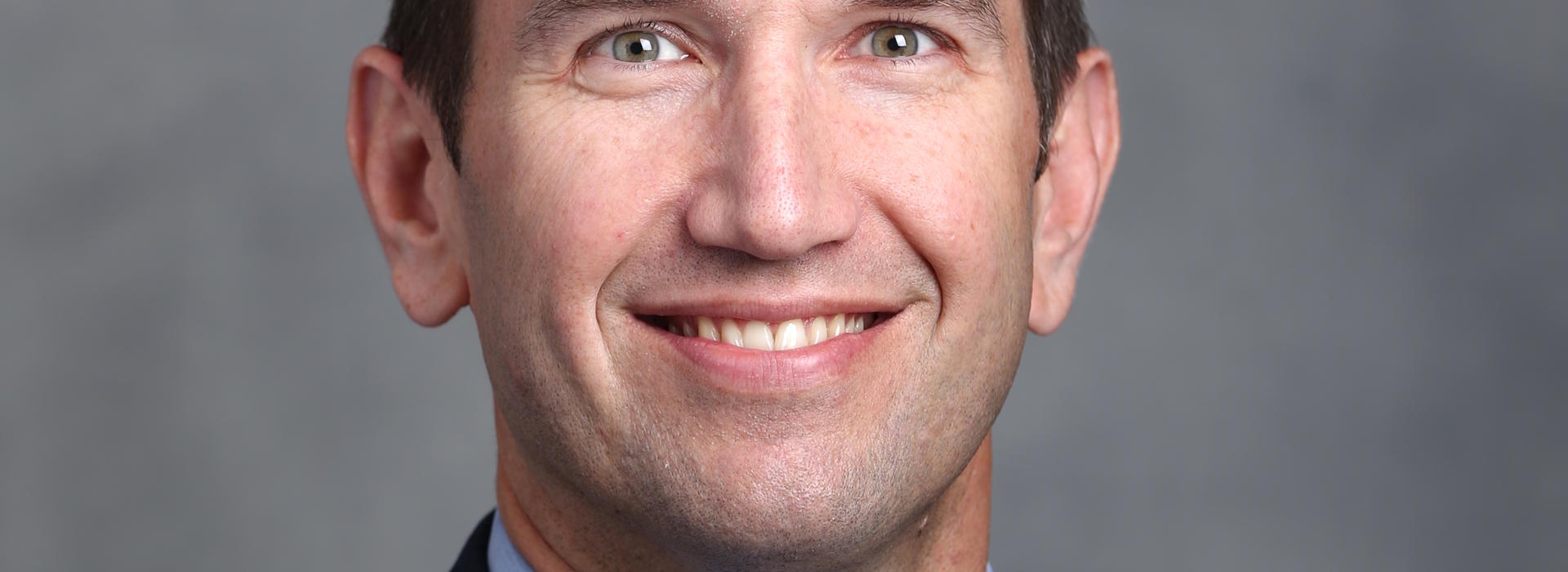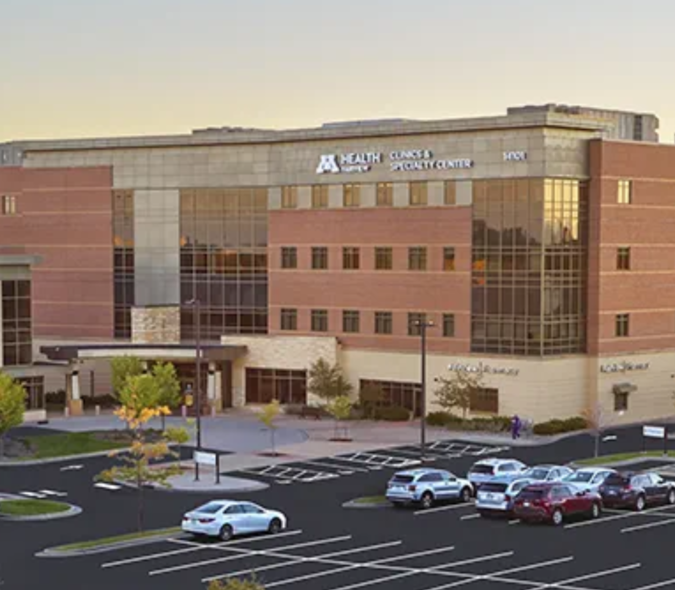
Jeffrey Macalena, MD, Named Cartilage Restoration and Joint Preservation Program Director
WHEN IT COMES TO SURGERY, Jeffrey Macalena, MD, enjoys when there is a discrete problem that can be identified and fixed. “There’s a problem, a procedure, and then hopefully the patient goes back to doing what they want to do,” he says. “I think it’s really exciting and why I chose to be an orthopedic surgeon.”
Since joining the Department of Orthopedic Surgery’s faculty as an assistant professor in 2011, Macalena has led a busy clinical practice doing just that. Between providing physician coverage for multiple Gopher sports, research, and resident education, he has been at the forefront of providing innovative options for our patients. This summer, the scope of his leadership activities expanded as he stepped into the role of Cartilage Restoration and Joint Preservation Program Director.
“I am excited for Dr. Macalena to lead M Health Fairview’s Cartilage Restoration and Joint Preservation Program,” says Associate Professor and Director of Sports Medicine, Bradley Nelson, MD. “His expert clinical skills and focus on evidence-based medicine will allow the program to grow into a regional center of excellence.”
This M Health Fairview program is one of only a handful in the state of Minnesota.
“We’re not the only people doing it, but it’s not necessarily the type of procedure that’s being done in rural clinics or small group practices,” Macalena says. “Procedures that fall in this category are often being completed at major academic centers or universities, and the University of Minnesota has been a leader in new orthopedic techniques.”
Macalena started doing cartilage reconstruction at the beginning of his tenure and says that it has grown exponentially over the last decade.
“One way to describe the growth is the number of patients that we’re able to see and that we’re able to treat,” he added. “I think that we work hard to ensure that our out-of-state partners know what we’re doing here at the University.”
Joint replacement is a good option for many people, but for some, there is a real benefit to try to preserve the joint when possible. That’s where cartilage restoration comes in. The program encompasses a variety of procedures and techniques that can negate or delay the need for a joint replacement surgery. Common procedures involving the knee include cartilage transplantation (also called an osteochondral autograft or allograft), which involves taking bone or cartilage from a donor or the patient and moving it from a less important area to a more important area that has been damaged. Another cartilage reconstruction technique is autologous chondrocyte implantation (ACI). This involves harvesting the patient’s own cells and using these cells to grow new cartilage, which can then be reimplanted back into the knee during a subsequent surgery.
Cartilage reconstruction surgery is often coupled with an osteotomy. During an osteotomy, the bone is actually cut to adjust the alignment of the leg, optimizing the biomechanics and weight distribution throughout the knee. This prevents further degeneration of existing or newly implanted cartilage. While these procedures are most common in the knee, the same concepts can be applied to other areas, like the hip, shoulder, and ankle.
Macalena’s long-term vision for the Cartilage Restoration and Joint Preservation Program is multi-faceted.
“We want to provide our patients with new and emerging techniques for joint preservation and cartilage reconstruction in their knee, and to critically follow those patients so that we understand how they’re doing,” he says. “These are complex techniques that require a long and involved recovery and they have significant costs. The patient bears a lot of the energy and time to get better, so it’s important to see how they’re doing.”
He also wants to continue using our position as a regional expert to offer and study new and emerging cartilage techniques. For example, the program is currently conducting studies that examine microfractures as a method for cartilage reconstruction, augmented with a special proprietary gel that coaxes cells into growing and developing sooner.
“Dr. Macalena initiated a system to enroll our patients in the International Cartilage Repair Society Registry,” Nelson explained. “This allows us to track our patients’ outcomes more comprehensively, ensuring we are providing the best possible care.”
Macalena’s research doesn’t stop with the Cartilage Restoration and Joint Preservation Program. He has been involved in several multi-center studies that have generated excitement. The Stability II study, “compares ACL reconstruction plus an extra ligament versus just ACL reconstruction,” he explained.
The federally funded STAR trial through the Department of Defense is comparing the timing of surgery and rehabilitation following multi-ligament knee injury. Although ligament reconstruction surgery doesn’t fit perfectly under the category of cartilage reconstruction, it is a big part of what knee specialists such as Macalena do.
“The fact is that knee ligaments provide important stability across the knee joint, and for us to consider cartilage reconstruction to get people back to doing what they want to do, they need to have a stable knee and their ligaments need to be functioning properly,” he explained. “It’s something that we’re excited about because the study is trying to answer some pretty difficult questions.”
Macalena has been able to apply his leading-edge research and practice to the coverage of Gopher sports. He has served as a team physician for Gopher football and wrestling for the last three years and baseball and softball for five years. He also provides coverage during the Final Four, Big Ten wrestling tournaments, and other NCAA events, as needed. “It’s something that I really enjoy,” he says. “It’s a part of my practice that helps keep me fresh and it’s a really fun part of what I do.”
Macalena explained that since cartilage restoration procedures are such a big undertaking and entail recovery periods of about eight months, they usually aren’t a good fit for college athletes that need to perform at a high level upon return to sport. Because of this, some of his athletes work very hard using nonsurgical techniques such as physical therapy, athletic training, and intermittent use of injections to get through their years of competition.
“Once they finish competing is when I would consider pursuing cartilage reconstruction if they remain symptomatic,” he says. “We want to help them through their life, to get through their job, to participate in leisure activities, and to play with their kids; that’s why we need to engage patients and come up with an individualized treatment plan to get them back to activity.”



